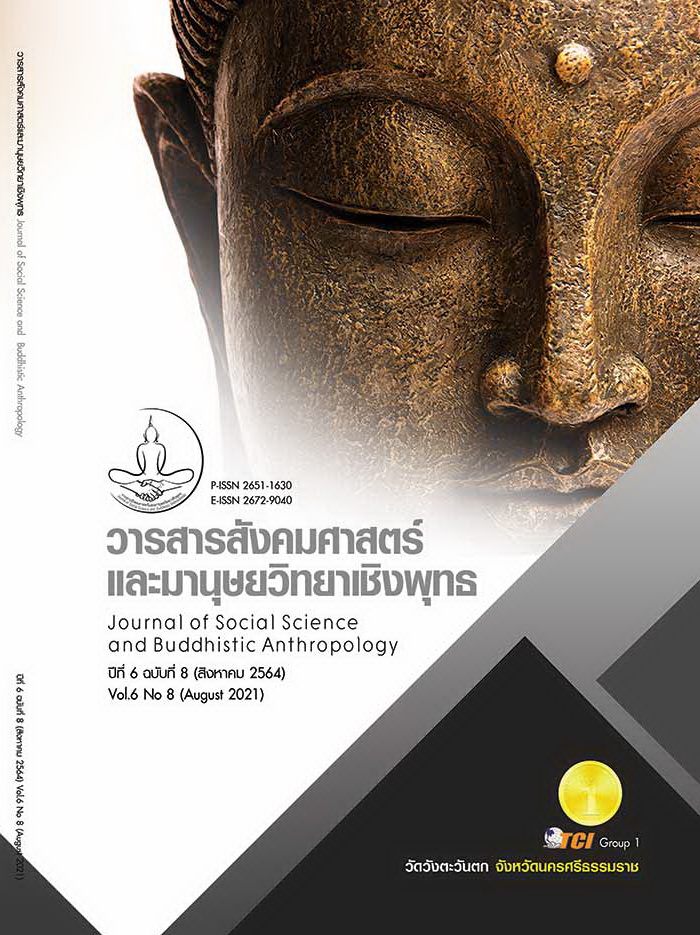FACTORS ENHANCING LOYALTY TO EMPLOYEE FOR ORGANIZATIONS IN THE INDUSTRIAL BUSINESS SECTOR
Keywords:
Structural Equation Model, Loyalty, Organizational Commitment, LeadershipAbstract
The objectives of this research article were to 1) study enhancing loyalty to employee for organizations in the industrial business sector factors, 2) develop a structural equation model of employee for organizations in the industrial business sector factors. This research was a qualitative and quantitative research. The quantitative data was obtained through questionnaire of 500 executives implementing descriptive statistics, inferential statistics, and structure Equation Modeling (SEM). The findings indicated that the levels of importance of loyalty were very significant in all aspects. The highest level of importance of the leadership aspect was that the supervisor created a work manual detailing the structure of the work as an operating practice. The highest level of importance of the union relationship aspect was that organization provided cost - of - living welfare benefits which were suitable for economic conditions. The highest level of importance of the job satisfaction aspect was that supervisors always listened to opinions. The highest level of importance of the job characteristics aspect was that the work performed was necessary and affected others. Lastly, the highest level of importance of the organizational commitment to the organization aspect was to maintain the same corporate values. For the hypothesis testing, it was found that difference in sizes of industrial business recognized is significant difference to the importance of enhancing loyalty to employee for organizations in the industrial business. The analysis of the developed structure equation model showed that it was in accordance and harmony with the empirical data and passed the evaluation criteria. Its Chi - square probability level, relative Chi - square, goodness of fit index, and root mean square error of approximation were 0.101, 1.111, 0.953 and 0.015 respectively. The statistical significance of this study was set at .05.
References
ธานินทร์ ศิลป์จารุ. (2563). การวิจัยและวิเคราะห์ข้อมูลทางสถิติด้วย SPSS และ AMOS. (พิมพ์ครั้งที่ 18). กรุงเทพมหานคร: ห้างหุ้นส่วนสามัญบิสซิเนสอาร์แอนด์ดี.
สำนักงานปลัดกระทรวงแรงงาน. (2563). สถิติแรงงานประจำปี 2562. เรียกใช้เมื่อ 25 สิงหาคม 2563 จาก https://www.mol.go.th/wp-content/uploads/sites/2/2020/06/สถิติแรงงานประจำปี-2562.pdf
Alpander, G. G. (1990). Relationship between commitment to hospital goals and job satisfaction: a case study of a nursing department. Health Care Management Review, 15(4), 51-62.
Pinto de Sá, A. C. (2010). ob Characteristics and their Implications on the Behaviours and Satisfaction Levels of Call Center Employees: A Study on a Large Telecomunicatios Company. In Conference: 13th Toulon Verona ConferenceAt: Coimbra, Portugal. September 2010.
Ceylan, A. (2009). A Research Analysis on Employee Satisfaction in terms of Organizational Culture and Spiritual Leadership. International Journal of Business and Management, 4(1), 159-168.
Fiedler, F. E. et al. (1976). Improving Leadership Effectiveness: The Leader Match Concept.New York: JohnWiley and Sons.
Hackman, J. R. & Oldham, G. R. (1980). Work redesign. MA: Addison - Wesley.
Lamsuthi, V. & Silpcharu, T. (2020). The Management Direction of Industrial Business Organization with the Buddhadhamma Principles.Applied Science and Engineering Progress, 13(2), 175-182.
Lobel, S. (1991). “Allocation of investment in work and family roles: Alternative theories and implications for research.”. Academy of Management Review, 16(1), 507-521.
Mahan, B. et al. (2018). Labor - Management Cooperation in Illinois: How a Joint Union Company Team Is Improving Facility Safety.A Journal of Environmental and Occupational Health Policy, 28(2), 227-239.
Meyer, J. P. et al. (1993). “Commitment to organizations and Occupations: Extension and test of a three - component conceptualization.”. Journal of Applied Psychology, 78(4), 538-551.
Mitmek, T. & Worawattanaparinya, s. (2020). Guidelines to Staffs in Industrail Business Organization. Academy of Entrepreneurship Journal, 26(1), 175-182.
Raziq, A. & Maulabakhsh R. (2014). The Impact of Working Environment on Job Satisfaction. Procedia Economics and Finance, 23(2015), 717-725.
Zulfikri, A. T. et al. (2015). Organizational Leadership and Organizational Commitment of Kedah District Education Officers. Global Institute for Research and Education, 4(2), 7-12.








